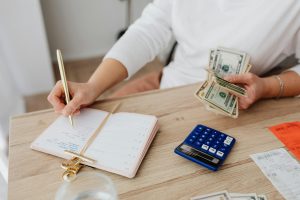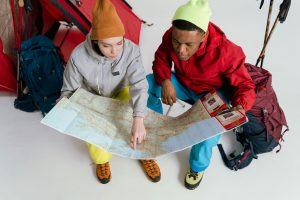Creative Learning Spaces: Inspiring Innovation in Schools
In the fast-paced world of today, education is becoming more important than ever. As the traditional classroom setting evolves to meet the demands of the digital age, educators are constantly seeking new and innovative ways to engage their students and promote critical thinking skills. One such approach that has gained traction in recent years is the concept of creative learning spaces. These environments are designed to foster collaboration, exploration, and inspiration, ultimately promoting a culture of innovation in schools. Let’s dive into the world of creative learning spaces and explore how they are inspiring innovation in schools.
What are Creative Learning Spaces?
Creative learning spaces are flexible and interactive environments that encourage students to think outside the box and engage with the material in new and exciting ways. Gone are the days of rows of desks and a teacher at the front of the classroom; these spaces are designed to be adaptable and collaborative, with a focus on student-centered learning. They can vary in size, shape, and resources depending on the needs of the school and its students, but they all share the common goal of promoting creativity, critical thinking, and collaboration.
The Benefits of Creative Learning Spaces
So, why are these spaces becoming so popular in schools today? The benefits are numerous and can have a significant impact on students and their learning experience. Here are just a few of the advantages of creative learning spaces:
Promoting Collaboration and Communication
One of the most significant advantages of these spaces is the emphasis on collaboration and communication. In traditional classroom settings, students often work independently, but in creative learning spaces, they are encouraged to work together, share ideas, and learn from one another. This promotes teamwork skills and prepares students for the real world, where collaboration is essential in many industries.
Enhancing Critical Thinking Skills
Creative learning spaces also promote critical thinking skills by encouraging students to approach problems and tasks in new and innovative ways. These spaces often have a variety of resources and tools, such as whiteboards, technology, and manipulatives, that allow students to explore different solutions and perspectives. This approach to learning is not only more engaging but also prepares students for future careers that require adaptability and problem-solving skills.
Fostering a Sense of Community
By promoting collaboration and communication, creative learning spaces also foster a sense of community within the classroom. Students feel more connected to one another and their teachers, which creates a supportive and inclusive learning environment. This sense of community can have a positive impact on students’ mental health and overall well-being, leading to improved academic performance and engagement.
Inspiring Innovation in Schools
In addition to the individual benefits for students, creative learning spaces are also inspiring innovation in schools as a whole. By embracing new and innovative ways of teaching and learning, schools are setting the stage for students to become the innovators of tomorrow. With access to these spaces, students are encouraged to take risks, explore their creativity, and think outside the box. This not only benefits students but also the school and society as a whole as it leads to the development of new ideas, products, and solutions.
Implementing Creative Learning Spaces in Schools
While the concept of creative learning spaces may seem ideal, implementing them in schools can be challenging. It requires a shift in mindset, resources, and support from school administrators, teachers, and students. Here are a few key factors to consider when implementing these spaces:
Flexibility and Adaptability
In order for creative learning spaces to be successful, they must be adaptable to different teaching styles, subjects, and activities. This may require the use of movable furniture, technology, and resources that can be easily switched out or moved around. It’s essential to have a designated space for these activities, but it should also be able to change and evolve with the needs of the students.
Incorporating Student Input
One of the most significant elements of creative learning spaces is that they are student-centered. It’s essential to involve students in the design and implementation of these spaces, as they will be the ones using them. This can also help foster a sense of ownership and responsibility for the space.
Training and Support for Teachers
To successfully utilize these spaces, teachers must be trained and supported in incorporating them into their teaching practices. This may require professional development and resources to help teachers understand how to effectively use these spaces to enhance student learning.
The Future of Education
As technology and society continue to evolve, so too will the field of education. Creative learning spaces are just one example of how schools are adapting to meet the changing needs of students and society. By promoting collaboration, critical thinking, and innovation, these spaces are inspiring the next generation of creators, thinkers, and leaders. As more schools embrace this approach, the possibilities for education and innovation are endless.
In conclusion, creative learning spaces are revolutionizing the traditional classroom setting and inspiring innovation in schools. By fostering collaboration, enhancing critical thinking skills, and promoting a sense of community, these spaces are preparing students to become the innovators of tomorrow. With the right resources, support, and flexibility, creative learning spaces have the potential to transform education and create a brighter future for all.










